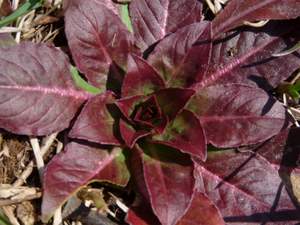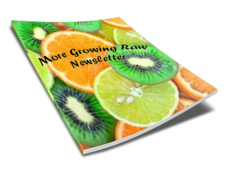|
Basic Herb Garden Tips
These basic herb garden tips give you a general guide to growing herbs. Consider annual, perennial and biennial herbs for your herb garden plan and try companion planting using herbs. You can grow herbs anywhere a plant can grow. In rows in a garden bed, in raised beds, in containers, or in a no-till garden that you can make yourself. The only limit is your imagination! General growth requirements for herbsMost herbs like to grow in full sun, but some will tolerate afternoon, or partial, shade. Your garden soil must be well-drained and as friable as you can make it. Add organic matter if necessary by incorporating manure, compost, or black earth and mixing it well in the bed. If you are growing in the Northern Hemisphere, adding some fish emulsion to your garden bed once a month from May to July will be sufficient to help grow a lush harvest. For Australian growers, herbs will benefit from being fed once a month from August and October, watered well in the hottest months, then fed again in February and March. Let them rest for the autumn and winter months. Annual, perennial and biennial herbsAn annual herb is a plant that performs its whole life cycle in one year and then dies. It grows from a seed, produces a shoot, leaves, flowers and fruits/seeds, all in the time span of a few months. The following common herbs are annuals:
Depending on which continent you live, some herbs considered annuals are actually perennials in your garden. Lemon Verbena is a woody shrub in Australia that can grow to be tree-size but in Canada it dies back in autumn. Gardening ‘standards,‘ you will learn, change with whatever country or gardening zone in which you happen to be living. It’s important for you to do your own research to find out your gardening zone and whether or not the herbs described here are annuals or perennials. 
A biennial plant is one that completes its life cycle in two seasons, then dies. Evening Primrose, Oenothera biennis, is an example. The mother plant produces many seeds dispersed by birds or the wind. The seeds lie dormant all winter and start growing the next spring. As the seed sends out roots below the earth and shoots upwards, only leaves appear on top of the soil. The Evening Primrose plant grows leaves in a rosette formation, flat and close to the ground. No stems or flowers are produced the first year. The next year, though, from the middle of this rosette comes a woody stem that elongates and stands tall above the vegetation. Along the stem grow the flowers which produce hundreds of seeds. At the end of the second season, the plant dies, having performed its purpose of propagating the species. Perennial herbs are plants that, once established, will come back every year to perform their complete life cycle in a few months. Most herbs that we know are perennials and easily grown in garden beds. Herb companion plantingOnce you have either seeded your basic herb garden bed or put in your new transplants, water them well and let Nature take over. Or, maybe not… Plants can be complicated creatures and the botanical world makes for a fascinating study. For instance, did you know that many plants give off chemicals through their roots to either inhibit or encourage the growth of other plants in their vicinity? The world of Companion Planting owes its beginnings from scientists making this interesting discovery. To give your herb garden a little ‘green-thumb’ help, try these combinations when choosing the herbs to grow in your garden. Basil and Lemon Balm like to live together, whilst Catnip and Lavender make great border plants. Hyssop can be of help to Strawberries by deterring beetles. Chives will improve the flavour of Parsley and both can be of help to Roses; grow them all together. Horehound supposedly is a grasshopper repellent. Sweet Marjoram and Sage grow well together. Herb garden plansFinally, here are four basic herb garden plans for growing herbs in different themed gardens; culinary, medicinal, ornamental and aromatic. Back to Growing Herbs from Basic Herb Garden Tips
Back to Healthy Eating Guide home from Basic Herb Garden Tips
|
Are you as healthy as you can be?
Take action to lift your energy and vitality levels beyond recognition.
Focus on
building healthy eating habits for just one month with
Veg Up and you’ll enjoy the effects for years. You will amaze yourself when you see how much more you can achieve.
More Growing Raw
Newsletter
Be sure to subscribe to "More Growing Raw" newsletter to receive monthly healthy eating tips, Growing Raw news and updates.
Most Popular Articles
- Green Smoothie Health
- Raw Food Health Levels
- Growing Vegetables in Containers
- Healthy Eating Plans
- List of Healthy Food to Always Eat Organic
- Growing a Vegetable Garden in a Polytunnel
- All Natural Detox Diet
Does your body need a fresh start?
Brighten up with all natural detox routines that give your body a cleansing push towards healthier patterns.
Learn how to
detoxify your body naturally. Your body is smart enough to clean itself without expensive detox pills and potions.








